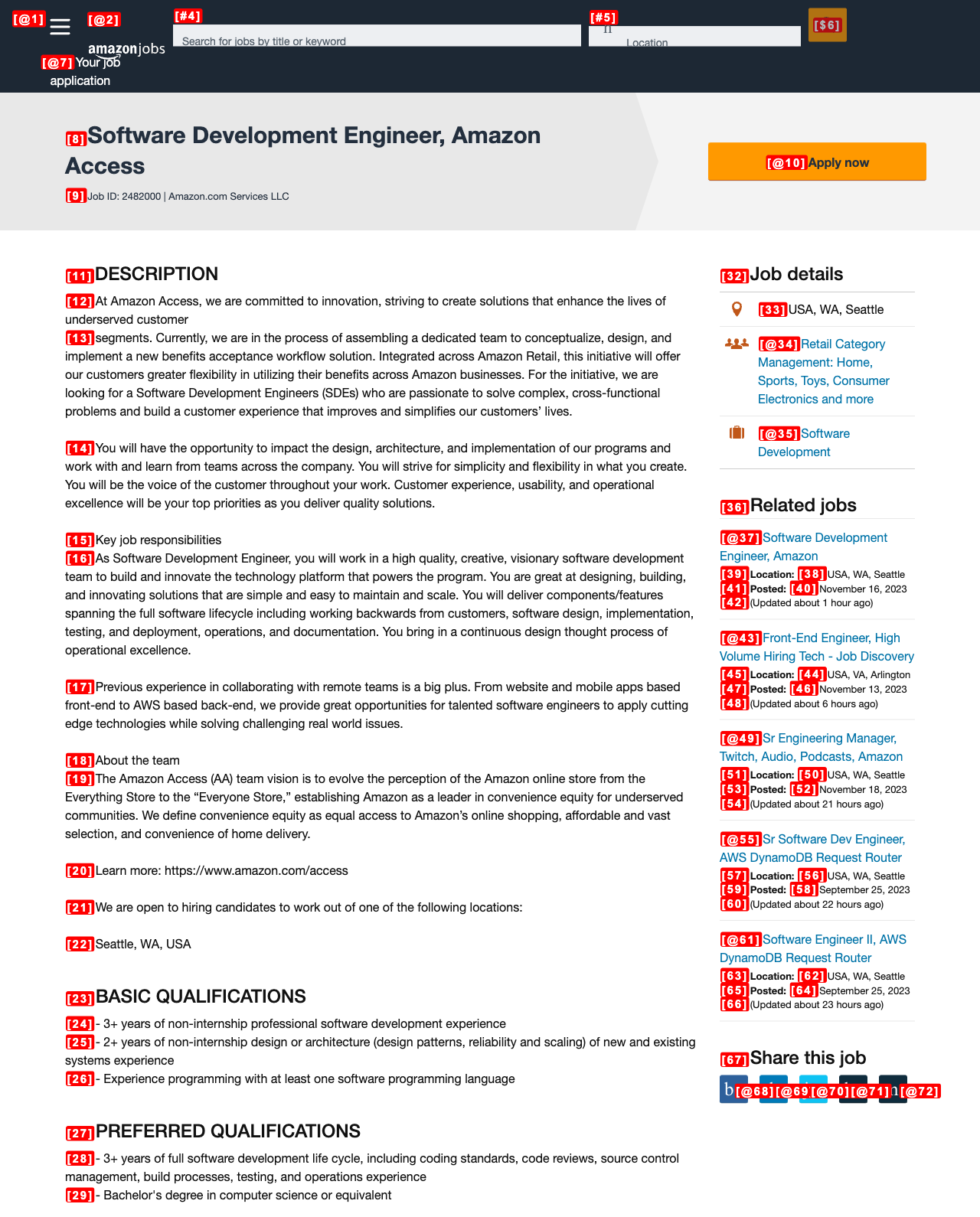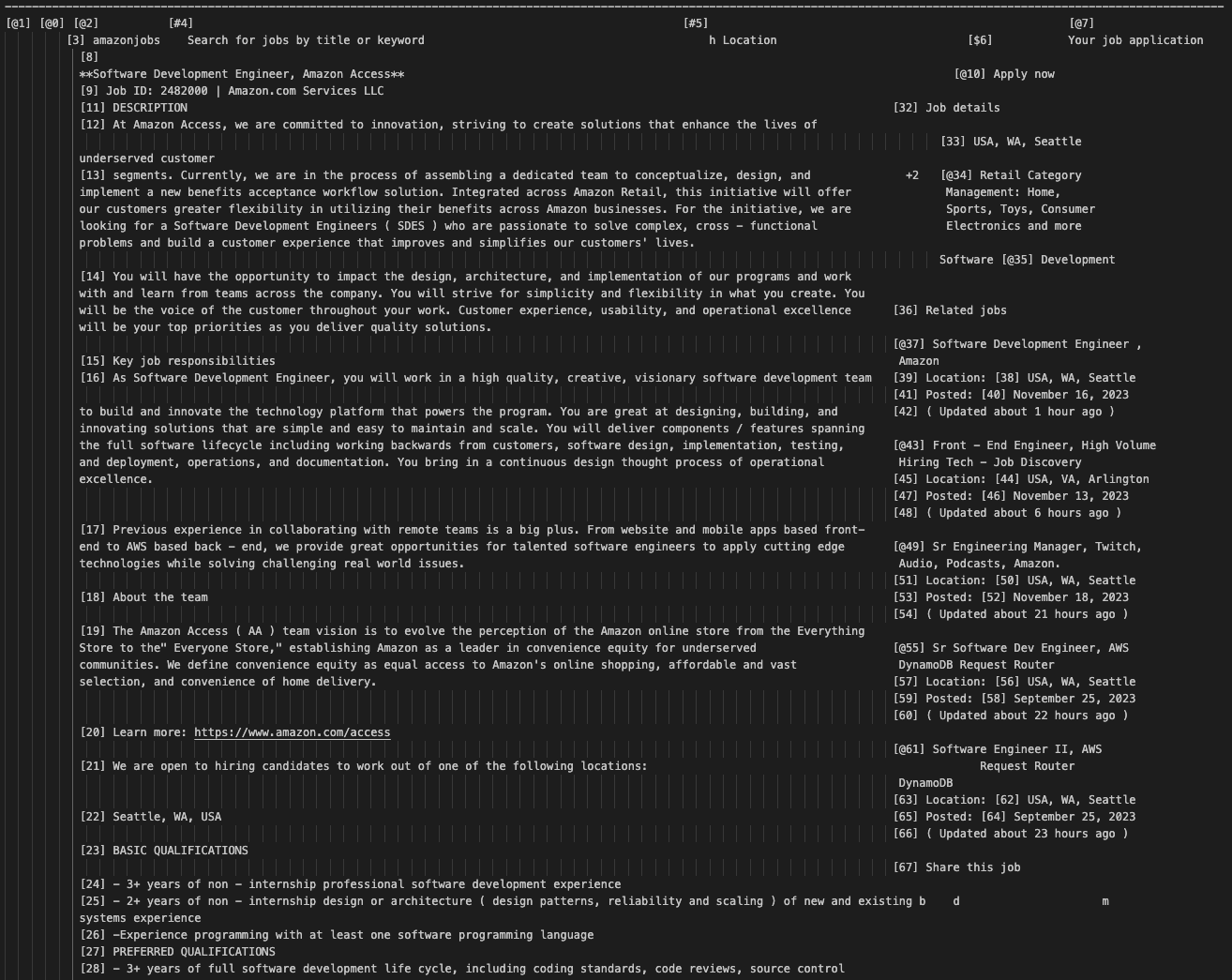🙈 Vision utilities for web interaction agents 🙈
🔗 Main site • 🐦 Twitter • 📢 Discord
If you've tried using an LLM to automate web interactions, you've probably run into questions like:
- How should you feed the webpage to an LLM? (e.g. HTML, Accessibility Tree, Screenshot)
- How do you map LLM responses back to web elements?
- How can you inform a text-only LLM about the page's visual structure?
At Reworkd, we iterated on all these problems across tens of thousands of real web tasks to build a powerful perception system for web agents... Tarsier! In the video below, we use Tarsier to provide webpage perception for a minimalistic GPT-4 LangChain web agent.
tarsier.mp4
Tarsier visually tags interactable elements on a page via brackets + an ID e.g. [23].
In doing this, we provide a mapping between elements and IDs for an LLM to take actions upon (e.g. CLICK [23]).
We define interactable elements as buttons, links, or input fields that are visible on the page; Tarsier can also tag all textual elements if you pass tag_text_elements=True.
Furthermore, we've developed an OCR algorithm to convert a page screenshot into a whitespace-structured string (almost like ASCII art) that an LLM even without vision can understand. Since current vision-language models still lack fine-grained representations needed for web interaction tasks, this is critical. On our internal benchmarks, unimodal GPT-4 + Tarsier-Text beats GPT-4V + Tarsier-Screenshot by 10-20%!
| Tagged Screenshot | Tagged Text Representation |
|---|---|
 |
 |
